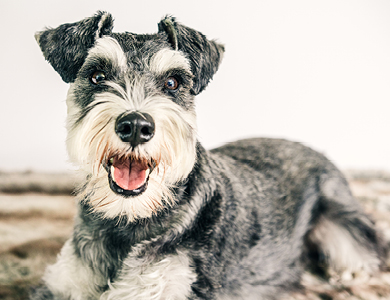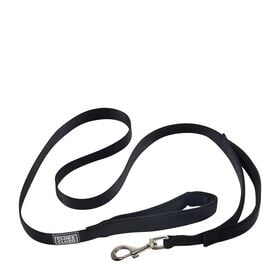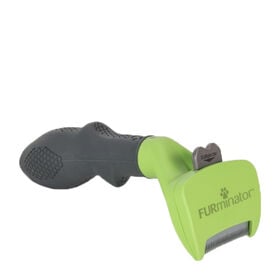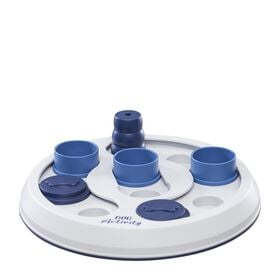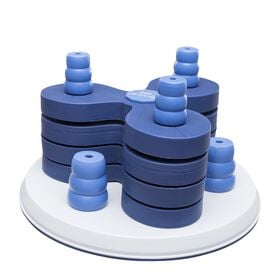Although similar to its much larger cousins, the miniature schnauzer is a distinct breed with its own special features. The schnauzer is a breed that is well known to most people. It is easily recognizable because of its distinctive beard. Although the miniature schnauzer is the most popular of the three sizes, its original ancestor is larger—about the size of today’s standard schnauzer—and, at the time, was bred to be a ratter and guard dog on farms.
Origins
The first documents related to the development of standard schnauzers, called wirehaired pinschers at the time, date back to the late 19th century. They were originally bred in Germany as medium-size farm dogs, and used as ratters, herding dogs and guard dogs. Miniature schnauzers are descendants of the standard schnauzer. Several sources suggest that miniature schnauzers were likely developed from the smallest specimens of standard schnauzers, or crosses between a standard and one or more smaller breeds such as the affenpinscher, the miniature pinscher, the poodle and possibly the Pomeranian. Over time, farmers bred down the standard schnauzer into a smaller, more compact size perfect for ratting.
The first recorded miniature schnauzer, a black female named Findel, appeared in 1888. The Pinscher-Schnauzer Klub created in Germany in 1895 mentioned the wirehaired miniature pinscher in the first volume of the club’s stud book. In the U.S., around 1926, the name was officially changed to miniature schnauzer.

Physical appearance
Miniature schnauzers are active dogs in the terrier group, and look like their larger standard schnauzer cousins. The have an alert and spirited disposition. They have a sturdy, nearly square build, with the length of the body equal to the height at the shoulders. Their good bone structure shows no trace of dwarfism. Miniature schnauzers measure 30 to 36 cm (12 to 14 in.) at the shoulders and generally weigh between 5 and 9 kg (11 and 20 lbs).
Miniature schnauzers have a double coat, with a hard, wiry outer coat and a soft, close undercoat. The hair on the head, neck and body must be groomed and generally plucked. The miniature schnauzer’s characteristic beard is kept longer, as is the hair on the legs. The typical coat colour is salt and pepper, with shades of grey, but solid black (the only solid colour allowed) and black and silver are also allowed. They have a strong, rectangular head whose width diminishes slightly from ears to eyes, and again to the tip of the nose. The ears were originally cropped, with pointed tips. Today, we see increasingly natural, v-shaped, forward-folding ears, since ear cropping is prohibited in Quebec.

Life expectancy and health
While miniature schnauzers are generally a healthy breed, certain problems, in particular hyperlipidemia, pancreatitis and urinary stones, are more common in miniature schnauzers than in other breeds. They are also prone to liver shunts, cataracts and von Willebrand Disease (VWD). Schnauzers should have their ears thoroughly dried after swimming or grooming because of the risk of ear infections. Ear exams should be part of a regular annual checkup, but also daily monitoring. Miniature schnauzers have a lifespan of 12 to 15 years, most living to be 12 or 13 years old.
Energy level and temperament
Miniature schnauzers are an alert and energetic breed, but obedient and easy to train. They are friendly, intelligent and willing to please. They are never aggressive or timid. They tend to be excellent watchdogs, with a good territorial instinct, but they are more inclined toward barking than biting. They are often aloof with strangers until their owners interact with the dogs. They are extremely playful dogs and, if not given an outlet for their energy, can become bored and invent their own fun. Miniature schnauzers have a high prey drive, which means they tend to chase small animals and should therefore be kept on a leash when not in a fenced area.
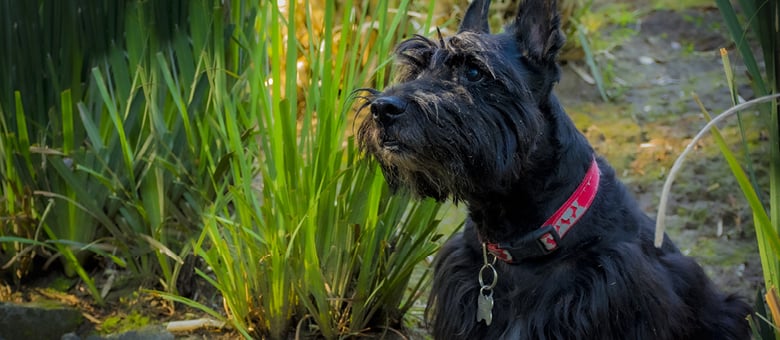
Maintenance and grooming
Because of their double coat, miniature schnauzers require frequent grooming and brushing to keep them looking their best. However, they lose very little hair. For competitions, part of the dog’s coat is regularly stripped or plucked by hand, giving the dog its classic terrier look. This is a very time-consuming process that requires a great deal of dexterity. Most miniature schnauzer owners choose to have the dog’s coat clipped by a professional groomer, making it much easier to maintain. This should be done every five to eight weeks to keep the dog’s coat looking good. Left unclipped or unstripped, body hair will grow two to four inches, and tend to form knots and curls. Schnauzers should be bathed approximately once a month, depending on their living environment. Nails should be trimmed regularly, ideally every two to four weeks, depending on how the dog wears them down. Ears should be checked every week for accumulated debris or wax buildup, and cleaned as needed.
For more information, contact a registered breeder at the Canadian Kennel Club, who can answer all your questions. You can also contact the organization for more information on breeders and various breed clubs in Quebec and elsewhere in Canada.


